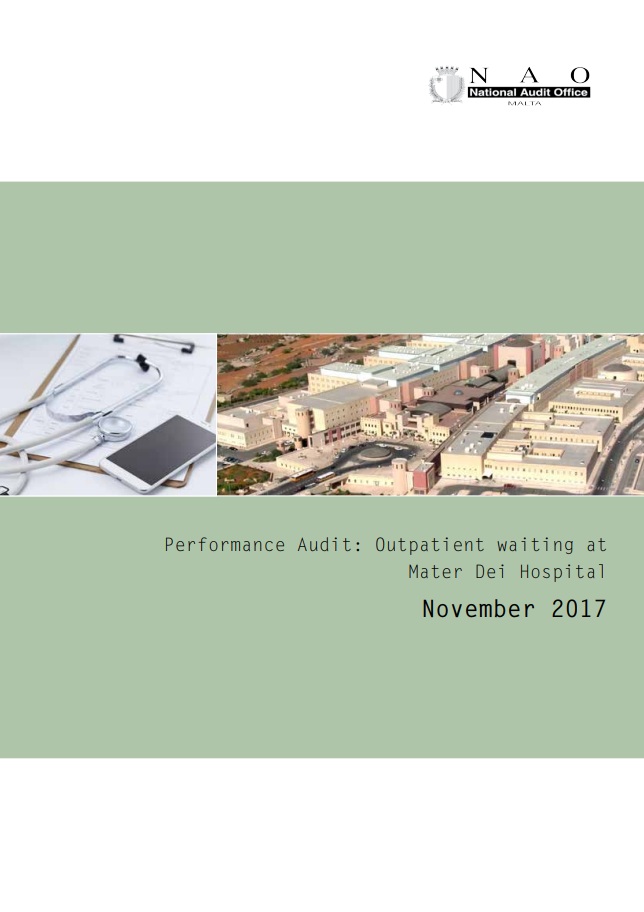- Home
- Publications
Publications
You may browse through our online list of NAO publications which include audit reports and annual reports. The audit reports are categorised according to the Classification of the Functions of Government (COFOG) developed by the OECD.
All Publications- Categories
- Publications Archive
- Events
- Careers
- About Us
 Health November 2017
Health November 2017Performance Audit: Outpatient waiting at Mater Dei Hospital
Download PublicationPress Release
The Auditor General reported that Mater Dei Hospital’s (MDH) Outpatient Department has evolved in many ways, particularly in terms of the number of patient visits, the increasing availability of clinical specialties and the work practices adopted. Nonetheless, excessive waiting time for an Outpatient Consultation appointment remains an issue of concern to both patients and the Hospital. Based on -case studies involving five clinical specialties, the foregoing have historical roots, are multifaceted, complex and involve competing interests.
Inefficiencies in three major areas, namely, inappropriate referrals, unequal distribution of patients between consultants, and no shows, individually and collectively significantly influence outpatients’ demand. The foregoing is mainly attributable to patients’ oscillation between the private and public health sectors, the fragmentation of health policy and protocols, shortcomings in primary health care as a gatekeeper to secondary care as well as MDH’s limited enforcement action over inappropriate referrals and patient no-shows.
The cost of delivering Outpatient services exceeds an estimated €32 million annually. Nonetheless, the Hospital faces a number of constraints to balance its supply of outpatient services with the prevailing demand. These limitations relate to issues arising out of the availability and synchronization of MDH’s resources as well as work practices. These concerns continue to prove challenging and limit the Hospital from extending its outpatient consultancy services.
The Hospital is still in the process of developing a strategic operational framework for the Outpatient Department as well as determining maximum waiting times for the various clinical specialties. The absence of a formalised and an officially adopted strategic framework as well as complementary protocols are conducive to clinical specialties pursuing their particularistic interests rather than hospital-wide goals.
The Hospital’s organisation structure portrays a number of management layers, most of which evolved over a substantial period. However, in cases, reporting lines are ambiguous due to multiple communication lines involving the Hospital, the Ministry for Health, line managers and heads of various professional streams.
The absence of an integrated administrative IT system, which captures, processes and provides up-to-date, as well as reliable management information, hinders planning as well as management direction and control. The severance of audit trails through the fragmentation of manual and electronic records further weakens management control over various operational and logistical arrangements.
NAO is informed that MDH is planning a new outpatient premises within the Hospital. The new block will provide more room and be better equipped. Its full potential, nonetheless, will only be realised through more robust strategic and policy direction, stronger management control as well as streamlined work practices, which consider the competing interests of the various professionals providing Outpatient services.
The Report proposes a number of recommendations aimed at strategic, operational and IT levels.
